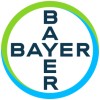
Evaluation of Irritation by Two Facial Gels Applied to Opposite Sides of the Face
Acne VulgarisA study to compare the skin irritation potential of two marketed gels for acne treatment, each applied to half of the face of healthy volunteers.

A Phase 2 Study of ASC-J9 Cream in Acne Vulgaris
Acne VulgarisThe purpose of this study is to evaluate if topical ASC-J9 cream is effective in treating acne.

A Clinical Study Evaluating the Safety and Efficacy of IDP-107 in Patients With Acne Vulgaris
Acne VulgarisThe purpose of this study is to assess the safety and effectiveness of IDP-107 in treating patients with acne vulgaris.

Safety and Efficacy Study of Clindamycin/Benzoyl Peroxide/Tazarotene Cream in Subjects With Acne...
Acne VulgarisBenzoyl peroxide, clindamycin and tazarotene are known to be effective treatment alternative for acne vulgaris. The purpose of this study is to assess the safety and efficacy of a combination product including these actives for the treatment of acne vulgaris. You may be suitable to take part in this study because you have acne vulgaris on your face. Acne vulgaris usually affects the face, but it can also affect the skin on the chest, arms, legs, and back.

Treatment of Acne Vulgaris With Doryx Tablets Compared to Doxycyline Hyclate
Acne VulgarisRandomized, multi-center, open label, active-comparator study to compare the efficacy and tolerability of Doryx Delayed Release Tablets to doxycycline hyclate in patients with moderate to severe acne vulgaris.

Evaluate Safety and Efficacy of an OC Preparation vs Placebo for 6 Treatment Cycles in Women With...
Acne VulgarisThe objectives of this study were to evaluate the efficacy and safety of drospirenone 3 mg/ethinyl estradiol 0.02 mg (DRSP/EE) in comparison with placebo in female subjects with moderate acne vulgaris during 6 treatment cycles.

Comparison of Two Salicylic Acid Formulations
Acne VulgarisThis study is a split face, paired-comparison, pilot study of at least 10 subjects to complete. Participants in this study will be patients seen at Children's Memorial Hospital, who are clinically diagnosed with mild to moderate acne vulgaris. Participants will be recruited from one of the clinics, as well as from previous Institutional Review Board (IRB) approved acne studies housed in the Department of Dermatology. All subjects accrued from previous studies have agreed to be contacted for further investigations. Subjects 13 to 35 years of age with mild to moderate acne vulgaris symmetrical in appearance on both sides of the face, and meeting inclusion criteria will be eligible to participate

A Pilot, Multi-Center, Patient Preference Study Comparing Two Clindamycin/Benzoyl Peroxide Gels....
Acne VulgarisEvaluate patient preference factors comparing two clindamycin/benzoyl peroxide gels. One dispensed in a pump presentation, the other in a tube presentation.

Microdermabrasion for Acne
Acne VulgarisThe purpose of this research project is to study the effect of micordermabrasion to try to improve the appearance of facial acne. The microdermabrasion machine is a hand-held device that directs pressurized aluminum oxide crystals at its target accompanied by a suction device. It is not yet clear how much improvement can be seen with these treatments or exactly how the skin's response causes these improvements. In this study, we are interested in learning how well microdermabrasion works to improve the symptoms of acne.

Efficacy and Safety of a Preparation Containing an Antibiotic and Anti-Inflammatory Agent in Acne...
Acne VulgarisThe concept behind our study was to combine an effect of antibiotic and anti-inflammatory agents for a more efficient acne therapy directed at the factors involved in the pathophysiology of the disease. For this purpose we evaluated a combination of clindamycin phosphate and salicylic acid in a non-irritating carrier.
